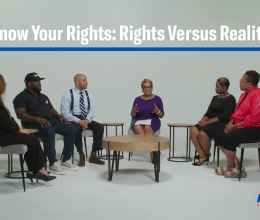For years, the story has been the same. Its plot involves unnecessary stops, disproportionate responses, and inexcusable use-of-force. People of color in Cleveland, and cities like it across the country, have become intimately familiar with this narrative. Police enforce the law in different ways depending on who they are policing. And how does this story usually end? With silence from city officials, or maybe a settlement with no admission of wrongdoing. In response to persistent attempts to discredit their experiences, activists and leaders in the black community have pushed for new tools to change how people in power hear their stories. A Similar Story Where Police Collect Data Recently, the court-appointed monitor released a first-year plan for implementing the agreement between the City of Cleveland and the U.S. Justice Department to reform police practices. Several major points in the plan deal with the use of force by officers, and how these incidents are reported. This reporting has the ability to take a disturbingly common story of police misconduct and package it in a way that skeptics cannot ignore. In places where better data collection policies have been implemented, a similar story about inequities in law enforcement emerges. In Florida, a 2005 law began requiring police departments to report the race of people who received seat belt tickets. These numbers revealed massive racial disparities—black people are ticketed for not wearing seat belts anywhere from twice to four times as often as their white counterparts.
In places where police are required to collect data when issuing tickets or using force, a similar story of racial inequities emerges.
In Connecticut, efforts by the ACLU resulted in the first law in the nation requiring police to report the race of people on whom they use stun guns. A recent report showed that when police officers drew their stun guns, they were more likely to actually fire on black or Hispanic people than on white people. Follow the Numbers This data illustrates that police officers do not enforce the law equally for all people. Evidence shows that police treat people of color more harshly, when both issuing citations and using force. This is exactly what people of color have been saying for years. Data can support and validate the often-ignored experiences of people of color and give clear directions for how to shape police reforms. So what about Cleveland? In order to know whether the consent decree reforms are making the changes they promise, we need the data. This is a critical tool to changing the stories to have endings that tell about justice.







